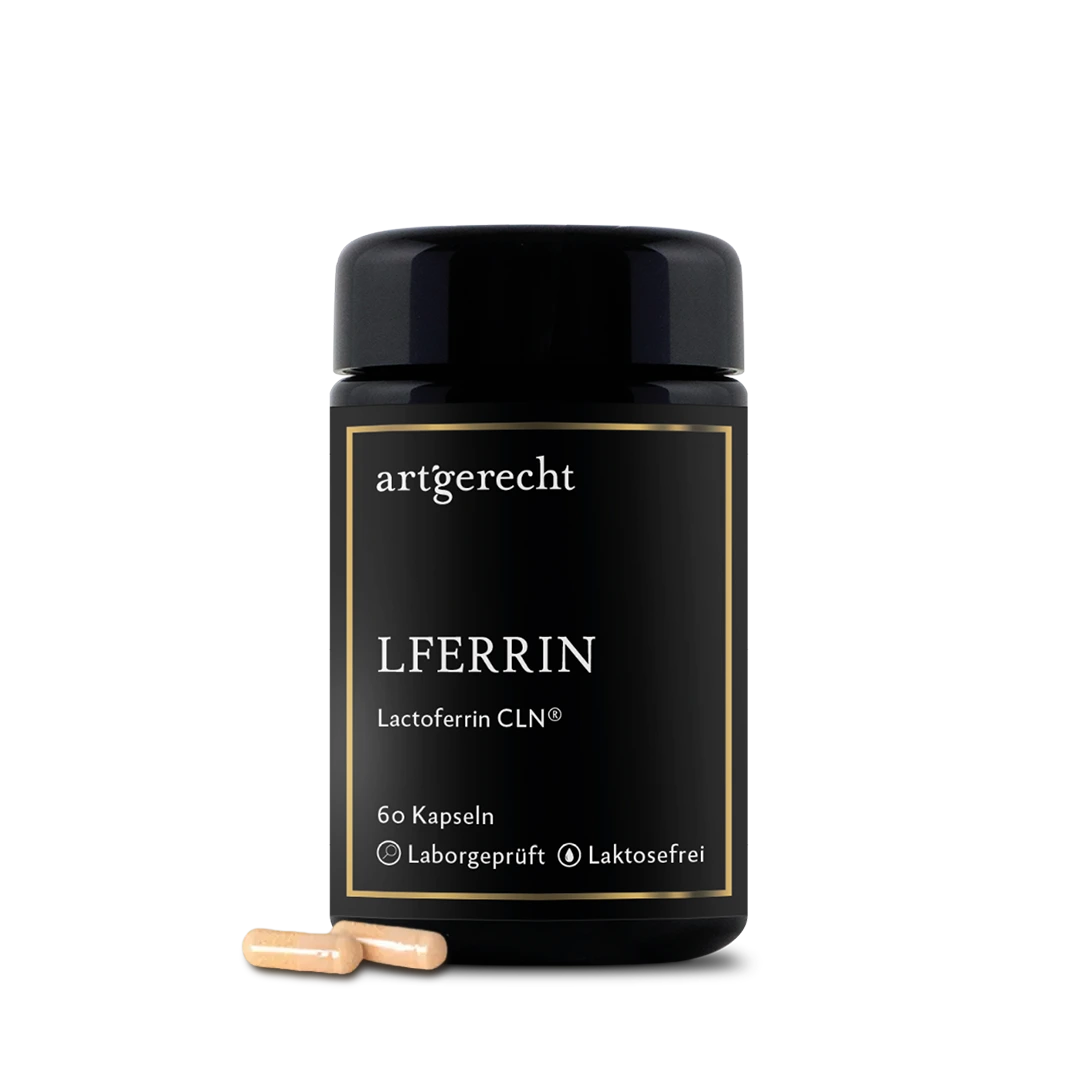- The „birth“ of epigenetic inheritance
- What is epigenetics?
- How does epigenetic programming work?
- The evolutionary context: What can we learn from epigenetics?
- Epigenetic inheritance or epigenetic effect?
- Epigenetic foods – With which we can support our „programming“
- Food as medicine
- Your life – Your program
- Literature:
Our DNA is like the hard drive of a computer, on which all our blueprints that our parents have passed on to us are stored. The genes are individual sections of this DNA on which certain characteristics, such as eye color, are fixed. These cannot be changed by us today or in the foreseeable future. However, we can influence which parts of the DNA are active or inactive - this is the subject of epigenetics. But how is this possible?
The „birth“ of epigenetic inheritance
During the last winter of the war in 1944, the food supply in Holland collapsed under German occupation. Since deaths, births and even birth weight and later illnesses were documented in detail, this led to a unique discovery: the fact that women gave birth to underweight children during times of famine was also known from other crisis areas. However, these children were increasingly overweight later in life and passed these characteristics on to their offspring to a lesser extent, even though there had long been enough to eat again. How could this information be passed on even though no changes to the DNA (genetic material) could be detected? It was the birth of epigenetics, which describes the interplay between environment and genome.
What is epigenetics?
Epigenetics (a combination of the ancient Greek “epi”= to, on and the term “genetics”) is a field of biology. It deals with how living beings develop and how this development is shaped by the interaction of cells in the body and the exchange with environmental stimuli. Epigenetics investigates how different cells can develop from the same genetic information. This is because the activity of our genes can be increased or decreased or even turned on or off by various environmental stimuli.
It is best to imagine your own genetic material as a large library. One book, for example, is about your own attitude to life, while another contains characteristics relating to your appearance. Everyone inherits a book from each of their parents, which contains everything about their lives. In the grandmother's book, the chapter about her early childhood during a war perhaps reads: „The world is cruel and in life there is much hatred, misery and death.“ The mother probably did not have a good childhood either and adds: „Life is oppression, fear and beatings.Anyone who has had few positive experiences in their childhood will then finally reinforce the headline: „Life is cruel!“
In turn, this causes the body to produce more stress hormones every time this headline is read. As a result, we develop anxious behavior as well as a susceptibility to certain illnesses. So imagine you could delete the title ""Life is cruel"" and instead write ""Life is beautiful"". In the science of epigenetics, this kind of rewriting is called reprogramming.
How does epigenetic programming work?
The DNA is the fixed component of every personal library. The books in it with their epigenetic program contain the contents that can be changed by so-called methylation (see Fig. 1). DNA methylation controls the activity of our genes and is a natural regulatory process that occurs in cells. Everything that is written here shapes our character and behavioral type – whether we are a fearful, friendly, hostile or nervous person.
Specific genes regulate the exact production and timing of hormones, the maintenance of the necessary hormone levels in the bloodstream and the sensitivity of receptors on the cell walls to which hormones dock. These specific genes are programmed primarily up to infancy and influence all our central regulatory mechanisms: Immune system, metabolism, growth, behavior, food intake, water balance and even sleep. These „watchdog functions“ are visible in human behavior and are programmed as behavioral traits.
The evolutionary context: What can we learn from epigenetics?
Our two examples illustrate the complex topic clearly: A low birth weight (under 2800 grams) leads to so-called „catch-up types“. This means that these children have a higher risk of obesity and type 2 diabetes mellitus [1] in later life. Neglect, lack of attention, love and tenderness from parents can lead to a child becoming overweight or obese due to the programming of different genes. For example, this can lead to a measurable increase in hormones such as cortisol, thyroid hormones and testosterone [2]. Over millions of years of evolution, humans and animals have been programmed by experiences that have resulted in a certain expectation.
For example, newborns expect the presence of their mother and breast milk as food. Or to be carried and held by their parents during the day. If children do not receive what meets these human expectations, a new strategy must be found. This is based on the child's own experiences of fear, helplessness and panic without receiving help. These experiences sensitize the organism and any danger, no matter how small, is met with an intensified counter-reaction. Strong anxiety, aggressive behavior, but also increased immune activity are the result. These people become very susceptible to stress and have an increased risk of obesity and depression [3][4].
.Epigenetic inheritance or epigenetic effect?
Scientists are still debating whether we are talking about epigenetic inheritance (transmission of a trait from mother to child) or epigenetic effects (imprinting of the fetus in the womb by environmental stimuli). In humans in particular, it is not so easy to prove. Compared to animals and plants, humans cannot simply be crossed in a controlled manner, manipulated and examined to see whether inheritance has really taken place.
For example, if you look at the unborn child in the mother's womb, you can assume that it is not completely isolated there. This is because all environmental stimuli that affect the mother also have an effect on the child - and therefore directly on the second generation. This would then not be epigenetic inheritance, but an epigenetic effect. For epigenetic inheritance to occur, the inherited trait must be visible not only in the child, but also in the grandchildren, i.e. in the third generation.
Epigenetic foods – With which we can support our „programming“
Neglect in childhood, but also a lack of epigenetic foods” is a significant risk factor for the development of various diseases. These include obesity, diabetes mellitus, liver disease, sleep problems, poor anger control and even suicidal behavior [5][6]. A lack of the expected can be compensated for by other substances that affect the same process. Epigenetic programs do not disappear, but are only switched off and can therefore be switched on again. There is good scientific research on epigenetic cocktails“ made from omega-3 fatty acids and B vitamins.
Most promising, however, are interventions with type-appropriate foods. As many of these foods as possible should be consumed at least five times a week throughout the day to achieve a therapeutic effect[7].
For the production of methyl groups, the body needs
- Choline (eggs, iceberg lettuce),
- betaine (beet, mussels) and
- methionine (fish, nuts) [8]
Methyl groups control all the processes in our body that are needed to maintain health and for healing mechanisms. If we produce too few methyl groups, the body loses its healthy balance.
Other important substances are
Food as medicine
The following species-appropriate foods can help to either switch off or activate certain epigenetic programs in our body. In this way, they can also prevent the development of modern diseases such as diabetes mellitus, liver disease or obesity. In addition, all these foods can help us to take the most important of all steps to influence epigenetics: behavioral change.
- Algae
- Berries, especially blueberries and strawberries
- Broccoli
- Cashewüsse
- Eggs
- Iceberg lettuce
- Fish
- Poultry
- Green leafy vegetables
- Green tea
- Garlic
- Seafood
- Seafood and shellfish
- ;and shellfish
- Mushrooms
- Beetroot
- Red grapes
- Sauerkraut
- Black tea
- Celery
- Shrimp peppers
- Asparagus
- Tamarind
- Wasabi
- Onion
Helpful foods
- Apple
- Artichokes
- Pepper liver
- Parsley
- Red peppers
- Red wine
- li>Sesame
- Citrus fruits
Foods that should be avoided as they promote the development of lifestyle diseases:
- Fructose
- High-calorie foods
- Lentils, especially soy
- Industrially produced convenience products
- Industrially produced fruit
- Corn
- Fattened meat
- Pesticides
- Süßbeverages and energy drinks
Your life – Your program
As you can see, epigenetics is a very complex area of biology that will continue to occupy us intensively over the next few years. Developing a better understanding of how different environmental stimuli affect our organism and our behavior over generations is extremely exciting. And, of course, to understand how we, in turn, are able to influence the effects of these stimuli through certain behavioral changes or even food in order to write our own „program“.











